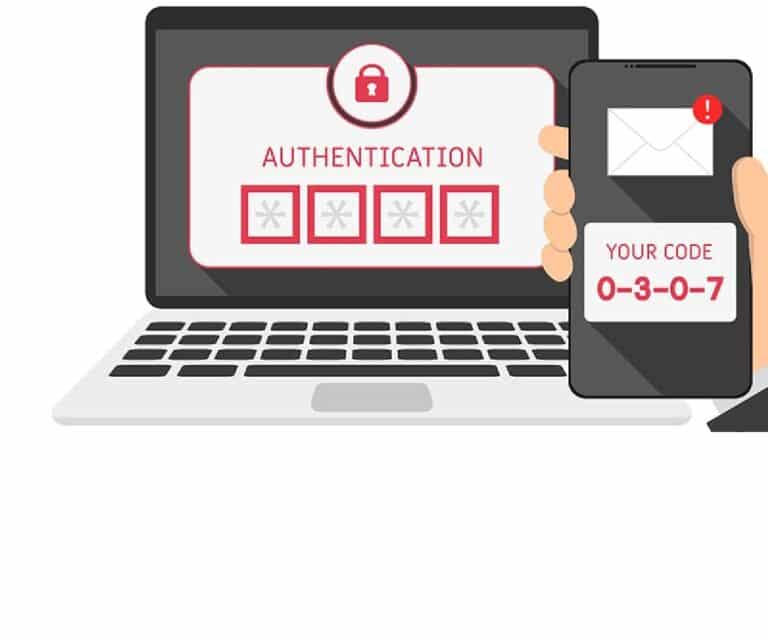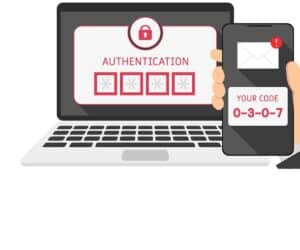Two-factor authentication (2FA) is rising in popularity and is quickly becoming the industry standard for online security. When a user tried to enter a website or app, 2FA is a biometric authentication method that provides an extra layer of protection. For example, instead of merely requiring a password to access an account, you may find that an additional credential is also required. Hardware tokens including such fobs, SMS text-message or voice-based 2FA, & push notifications are all examples of second-factor authentication. Biometric two-factor authentication is becoming more popular among enterprises. Fingerprints, retinal patterns, voiceprints, face recognition, and other biometrics are examples. Authenticator apps here come into the spotlight.
Software tokens are another sort of 2FA available through authentication apps. One-time passwords (OTPs) are passwords that are automatically generated & expire after 30 seconds. Typically, these come in the form of pin codes. Because of the short timeframe, it’s practically hard for hackers to steal someone’s second credential and then use it before it expires.
The Internet Research Task Force’s basic HMAC-Based One-Time Password (HOTP) mechanism is used to generate these codes (IETF). The IETF, on the other hand, never has access to the code.
The finest authentication applications are available on a variety of platforms, with the majority appearing on Android and iPhone devices and others on Windows and Mac PCs. However, only a few of the dozens many authentication apps on the market today are worth consideration, including the ones listed below.
What you will see here?
Mechanism behind these apps :
One of the simplest methods to start utilizing 2FA is to scan a QR code given by the company and website with your smartphone’s camera. When you’ve done that, the authentication app will start issuing a unique code that changes every time you use it. That code is only good for a few seconds as the second form of identification well before the authentication app refreshes it.
You only have to scan a Qr code once on your device. You won’t have had to scan a QR code after setup on this other device if you’re utilizing sync & backup.
Is 2FA sufficient protection?
When 2FA options first became available, many individuals felt that online vulnerability in the tech world would be eliminated. Unfortunately, this is not the case. 2FA isn’t entirely secure, just like any other type of internet security. Regardless of how hard they try, a hacker or two will discover a method to gain access to information they shouldn’t have. In January 2022, for example, Crypto.com was hacked. Nearly 500 accounts were hacked, and the hackers took over $31 million in cryptocurrency.
Despite its limitations, two-factor authentication is still an improved security choice than using passwords alone.
Go for these factors while choosing any app:
When choosing a few of these apps, make sure it backs up your account information (encrypted, of course) in the event you lose the phone you used to set everything up. This is available in Authy, Duo Mobile, LastPass Authenticator, and Microsoft Authenticator, but not in Google Authenticator.
Android blocks anybody from taking pics while an authenticator app is active, although iOS allows it. This is a major victory for Google’s mobile operating system in terms of security.
You may use a specific device like YubiKey to deploy MFA for even more extensive security. These devices generate codes that can be transferred through NFC, Bluetooth, or by physically plugging them into a USB port. These gadgets, unlike smartphones, offer the benefits of just being single-purpose and security-hardened. Malware-infected software on your phone may intercept all authentication codes generated by the phone’s authenticator app, however, this is improbable. Security keys don’t need an internet connection and don’t require batteries or moving parts, because they’re not as easy to use as your phone.
For even greater convenience, Authy & Microsoft Authenticator also have Apple Watch apps, whereas Google Authenticator & LastPass don’t.
To summarise:
- (1). Multifactor authentication to be used for all of your online accounts.
- (2). Authenticator apps are more secure than SMS codes in terms of security.
Finally, let’s all know what you think about these apps and the security risks they raise in the comments section below.
The Best Authenticator apps you can choose from:
Authenticator App by 2Stable
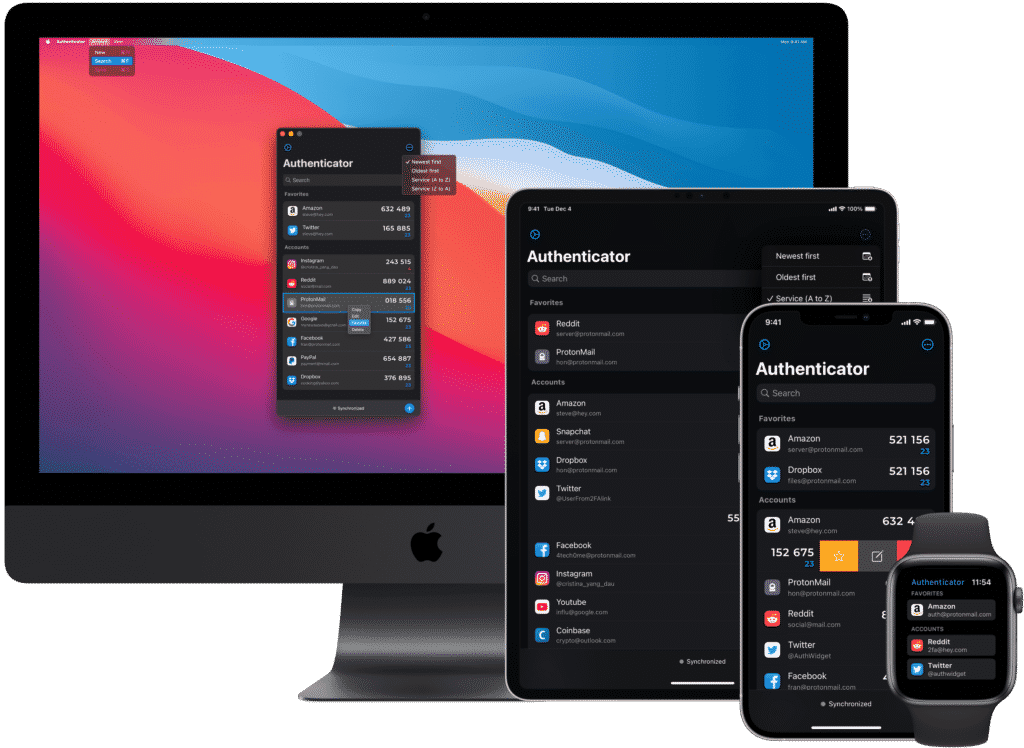
The aptly called Authenticator App from 2Stable, one of the most amazing authenticator applications on this list, offers a mix of great features. These features include biometric authentication, synchronization and backup, and full encryption for any 2FA content you choose to save on Apple’s iCloud service. It’s one of the most user-friendly authentication programs available.
If you only plan on saving 1 or 2 2FA accounts, the 2Stable Authenticator App is free. Family sharing, widgets, final encryption, and other features are available throughout the firm’s iPhone, iPad, Mac, & Apple Watch apps. However, backup and synchronization are not included in the option. Every functionality, including unlimited accounts as well as the ability to sync data across all platforms, is enabled for $10 per year. Face ID & auto-lock are two further functions.
2Stable’s Photo Vault software is a freemium tool that allows you to keep and protect your photographs and videos from outside threats. The App Store is where you can get it.
Duo

Duo Mobile, the most corporate-friendly 2FA account setup on our list, is currently own by Cisco. As a result, it provides developers with essential features such as multi-user deployment. Duo Mobile handles everything for end-users with one-tap authentication. It also contains Duo Restore, which makes backing up and recovering Duo-protected accounts on fresh machines relatively painless.
Alerts, fingerprints, and passcodes are among the authentication methods supported by Duo Mobile.
Duo Phone is free for up to ten accounts. After that, it could cost you as little as $3 each month. The majority of consumers would be able to keep within the free limit each month and save money.
Authy

Authy is one of few authentication apps available for Windows, Mac, Android, & Apple devices, as well as the Apple Watch. This makes it a great choice for everyone who utilizes a diverse range of devices in their everyday lives (Windows PC, Android, iPhone, Mac). It’s one of the most affordable. You receive 100 authentications each month and free assistance with a free Authy account. Extra authentications will pay $0.09 each, with no requirement to sign up for a monthly subscription.
Authy, oddly enough, wants a phone number to create a new account, it feels a little intrusive. Authy, on the other hand, has some amazing 2FA capabilities, including safe cloud backup.
The Authy app is simple to use, however, the interface should improve. It appears to be old when compares to alternative apps. Regardless, it completes the task. Touch ID, PIN protection, & passwords are all used to safeguard your Authy account for more security.
Google Authenticator

Many people have a love-hate relationship with Google, and if you’re one of them, you should move on to another option on this list. Greetings to the world’s simplest & most basic authenticator app, for everyone else.
Using Google Authenticator, you can add an account in seconds and use it whenever you want. Aside from that, some features are lacking, such as online backups as well as an Apple Watch app. These exclusions unexpected for a firm of Google’s magnitude, especially given that it provides users with instant access to Google Drive across multiple platforms.
When you’re an Android user, it is indeed usually best to avoid Google Authenticator and instead use the features included within your mobile device’s operating system. They’re far superior to the app. The rest of the world can utilize Google Authenticator, which itself is completely free. It’s also a little dull, which is something more to think about!
Microsoft Authenticator

Which authenticator app, Google Authenticator or Microsoft Authenticator, uses the most in the wild is a toss-up. I’ll venture a guess & say it’s one is from Microsoft.
Microsoft Authenticator supports two-factor authentication via mobile sign-in and code generation. It’s increasingly becoming a key verification tool for businesses and schools. This is also a popular option for individuals who aren’t affiliated with a group.
The Microsoft Authenticator application is available for download for free on all platforms. However, I do not recommend using it with iPhone or Android because the backup procedure is a little wacky., I do recommend it for Windows. After all, even the iOS version’s backup is handled by iCloud. Unsurprisingly, Android users also don’t have use of iCloud. However, this is a fantastic tool that you find to use in a variety of locations online.
LastPass Authenticator
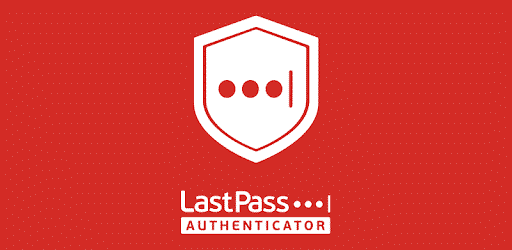
You may already be aware of LastPass’s password manager, which uses widely on a variety of platforms. LastPass Authenticator is indeed a free, minor extension of this. LastPass Authenticator, like similar choices, offers six-digit generated passcodes, SMS codes, and automatic push notifications.
To use the app’s backup feature, you’ll set up a free LastPass account. Lastpass Authenticator should run smoothly on any device after you’ve done that.
It makes sense to utilize LastPass Authentication if you already have a LastPass account (free or premium). It works anywhere that Google Authenticator is accepted.
Step Two

Another authentication app software that is exclusively available on the app store devices is Step Two. Mac, iPhone, iPad, and Apple Watch can download.. You can add up to ten accounts for free, just like with Duo Mobile. Your accounts link all across your devices via iCloud connectivity. You can utilize Step Two without limitations for $10 if you make a one-time purchase. Step Two is also available on Setapp.
Step Two distinguish by its attractive design. Its designer has taken some time to develop an authentication app that stands out and is enjoyable to use on any device. Unfortunately, other authentication solutions, such as Authy, which are in serious need of an update, cannot say the same.
TOTP Authenticator
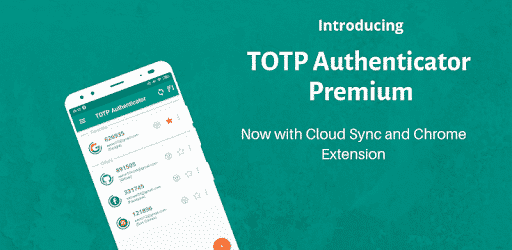
TOTP Authenticator, which is available on both Apple devices and Android, has comparable features to the solutions listed above, but with a few more. You may install a Chrome browser extension that makes utilizing the automatically produced codes easier as part of a premium membership (for a one-time price of $5.99). Premium membership also offers cloud sync (through Google Drive), which isn’t available in other apps. If you have a free account, you can still export information from the application to use elsewhere.
Conclusion
As we’ve seen in recent breaches and hacks, passwords alone aren’t enough to secure an online bank or social media account. Two-factor authentication (also known as multifactor authentication or 2FA) adds an extra layer of security.
One of the more secure versions of 2FA access via authenticator apps like Authy, Google Authenticator, or Microsoft Authenticator. Using one of these apps can even protect you from sneaky threats such as stalkers were.


